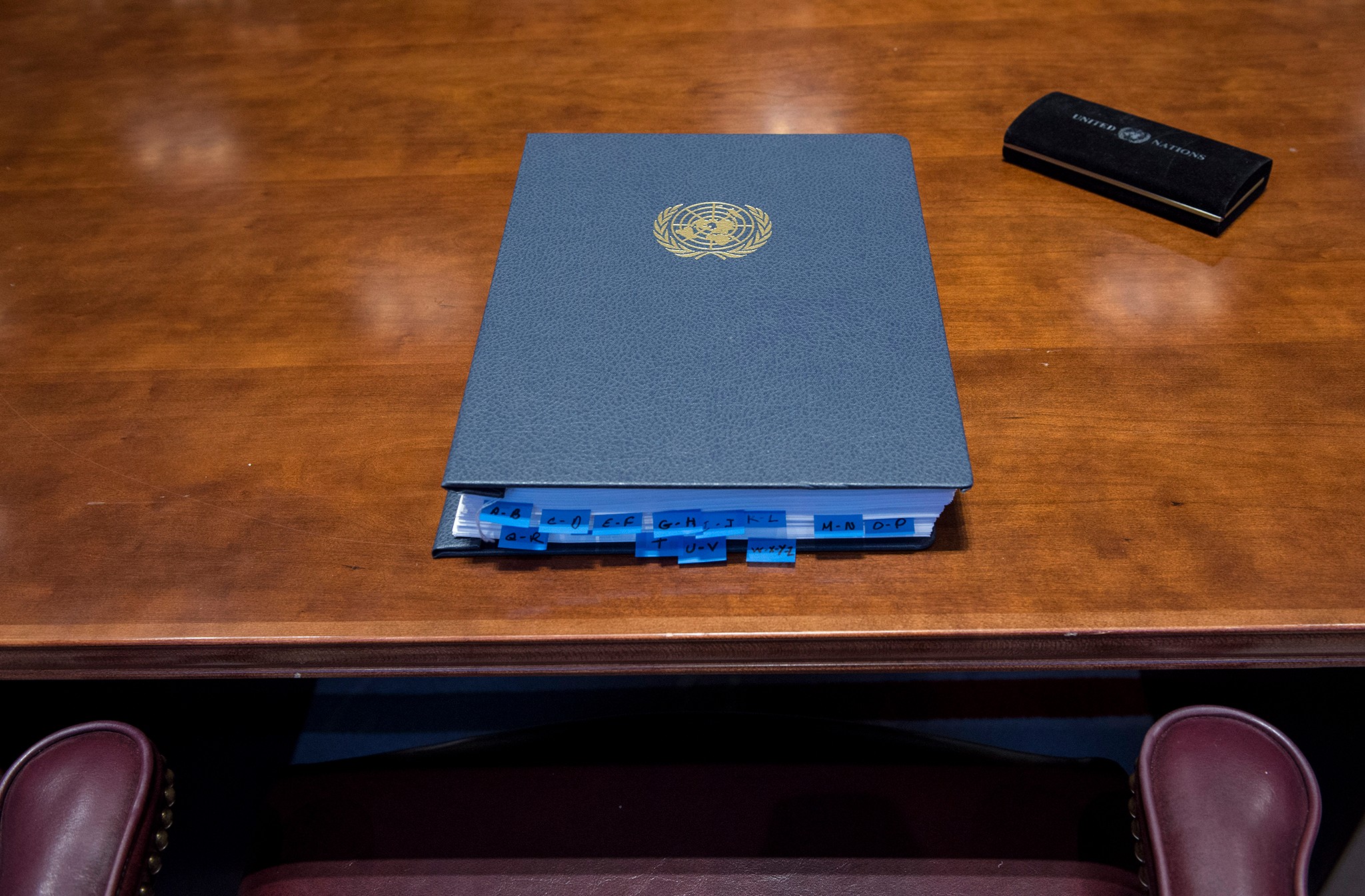 Signature book at the signing ceremony for the TPNW (UN Photo / Kim Haughton)
Signature book at the signing ceremony for the TPNW (UN Photo / Kim Haughton)
The Boys in the Ban: What the TPNW Means as It Enters Into Force
On October 24 — the momentous 75th anniversary of the founding of the United Nations — Honduras became the 50th state to ratify the UN Treaty on the Prohibition of Nuclear Weapons (TPNW). The treaty was approved by the UN General Assembly in July 2017 and, as a result of this 50th ratification, will enter into force on January 22, 2021. The United States has campaigned against it and released a letter that strongly encouraged nations party to the TPNW to withdraw their ratifications. Despite the intent of the TPNW, its impact will be less about the content and its signatories and more about what lies between the lines of this treaty and the future of nuclear weapons as a whole.
What’s in the TPNW?
Spearheaded by the International Campaign to Abolish Nuclear Weapons (ICAN), which was awarded the Nobel Peace Prize in 2017 for its efforts, the TPNW became the first international “legally binding instrument” to explicitly “prohibit nuclear weapons, leading towards their total elimination.”
Important takeaways from the text of the TPNW include:
- Article 1 (Prohibitions): prohibiting all actions to do with nuclear weapons themselves,
- Article 2 (Declarations): requiring each state party to declare if it has or previously had nuclear weapons or related facilities,
- Article 3 (Safeguards): requiring the maintenance of International Atomic Energy Agency (IAEA) safeguards,
- Article 4 (Towards the total elimination of nuclear weapons): implementation and removal of nuclear weapons as it specifically applies to nuclear-armed states,
- Article 5 (National implementation): state responsibility in implementing the requirements of the TPNW,
- Article 6 (Victim assistance and environmental remediation): providing restorative individualized assistance for victims of nuclear testing/usage and requiring states to take steps toward environmental remediation of contaminated areas, and
- Article 7 (International cooperation and assistance): cooperatively ensuring the provisions in the treaty are carried out.
Critics of the TPNW argue that it is incompatible with the existing Non-Proliferation Treaty (NPT) because the NPT and TPNW have two different goals on paper, which could lead nations to rescind commitments to non-proliferation. However, the TPNW also specifically references the NPT in its preamble as an important step to nuclear disarmament and reaffirms this in Article 3, which requires continued adherence to existing IAEA safeguards as required in agreements like the NPT.
Realism — Is It Important?
No nuclear-armed states have signed the treaty, but this is unsurprising. Nuclear weapons have changed the landscape of national defense strategies and international security forever; naturally, the U.S. and other nuclear powers reject the TPNW. Many non-nuclear states have also been resistant to the TPNW and its implications, especially those in NATO, supported by the U.S. nuclear umbrella.
During the treaty’s vote in July 2017, The Netherlands was the only state to vote no (Singapore officially abstained, and the remaining states either voted yes or did not vote), which resulted in a lengthy explanation of its choice. The country attributed the decision to being “incompatible with [its] commitments as a NATO state,” even though the country claims it supports disarmament, arguing that the NPT and the TPNW as they stand don’t address the current state of nuclear affairs particularly well. The Dutch response best conveys how the TPNW puts the world in a state of limbo — if situations were different, perhaps the TPNW would be a good idea. But we don’t live in that world.
Implications of the TPNW Going Forward
Is the TPNW entirely symbolic? Well — not exactly, but its projected impact is sure to lie in this domain. The short-term implications of the TPNW are not going to be particularly drastic, given escalating nuclear tensions between nuclear powers. However, early TPNW discussions have unearthed fascinating discoveries, something that the U.S. could study more intensively: Iran and Saudi Arabia — nuclear-ambitious states within different scopes — both voted yes, and North Korea voted yes on the UN’s 2016 resolution for treaty negotiations, the only nuclear-armed state to do so. Cases could be made for a wide variety of reasons as to why they all did, but one thing stands out: maybe diplomacy is possible, after all.
Long-term, the TPNW has the potential to instill a different sense of normative ethics in nuclear-armed states, quell a growing sense of mistrust amongst nuclear powers, and potentially increase the willingness to reduce national nuclear arsenals. Through this establishment of normative ethics, the TPNW entering into force might also encourage nations to think about their embrace of harmful nuclear testing, which has already received attention in nations including Japan, Kazakhstan, Russia, Australia, and even the U.S. States may even reconsider ratifying the Comprehensive Nuclear-Test-Ban Treaty (CTBT) as an international standard for protecting humankind from nuclear fallout.
Whether one thinks the TPNW is a flawed invention or a peacemaker, it’s impossible to deny that a new day has come: one that will encourage the world to reflect on the sustainability of nuclear weapons not just as a strategic tool, but also what we’re doing to the Earth and to humankind. Where exactly is the world going? And how are we going to get there?





